- Home
- Bobby Akart
Lines in the Sand: Post Apocalyptic EMP Survival Fiction (The Lone Star Series Book 3) Page 2
Lines in the Sand: Post Apocalyptic EMP Survival Fiction (The Lone Star Series Book 3) Read online
Page 2
Typically used in a military context, one of the most famous instances in American history occurred at the Alamo in 1836. Colonel William “Buck” Travis had just been named commander of the newly constituted Republic of Texas on March 2, 1836.
In the final days of the Battle of the Alamo, with the famed Mexican General Santa Anna surrounding the Texas stronghold, Colonel Travis received an ultimatum from his Mexican counterpart—surrender or die.
Colonel Travis consulted with James Bowie, the co-commander of the Alamo. They agreed that their group of less than a hundred defenders were no match for the larger, well-fed Mexican army of fifteen hundred. Nonetheless, Colonel Travis called his men together in the Alamo’s open courtyard.
He explained in all honesty that defeat was certain. The letter demanding surrender was read aloud. Colonel Travis proudly announced that he’d rather die than give the Alamo to the enemy. He then removed his sword and drew a line in the sandy soil of the Alamo between himself and his soldiers.
Colonel Travis asked for volunteers to cross over the line in the sand and join him. He made sure they understood their decision was irreversible. All but one man crossed the line to join Colonel Travis in a battle the tales of which will be told for as long as men tell tales. Emboldened by his men’s unselfish bravery, Colonel Travis provided Santa Anna his answer—cannon fire.
In recent times, presidents have used the phrase to intimidate world leaders and to rally public support for military initiatives. President George H. W. Bush famously drew a line in the sand when Iraqi dictator Saddam Hussein invaded Kuwait in 1990. As the crisis intensified, President Bush declared this line in the sand was drawn for the purposes of defending Saudi Arabia in the event Iraqi forces advanced beyond Kuwait.
But then, the line shifted as U.S. military forces were used to drive Iraq’s Revolutionary Guard out of Kuwait. Many within the Bush administration advocated invading Iraq and removing Hussein from power, but the president elected to work within his United Nations’ mandate. A dozen or so years later, the next President George Bush initiated the Iraq war.
In 2012, President Barack Obama declared that the use of chemical weapons by Syrian President Bashar Assad would cross a line that would trigger a U.S. military response.
Following this proclamation, Syrian forces used chemical weapons in Aleppo (March 2013), Damascus, Ghouta, Jobar, and several other Syrian towns throughout August of 2013. The line in the sand had been obliterated by President Assad.
There are consequences to not backing up the line drawn in the sand. After the red line, as he called it, was drawn by President Obama, over one hundred thousand Syrians died, many as a result of chemical weapons attacks.
There has been a change in policy toward Syria with the Trump administration.
On April 6, 2017, Syria used chemical weapons again to attack the northwestern Syria town of Khan Sheikhoun. Eighty Syrians were killed and scores more were injured. This prompted the typical United Nation’s condemnations but the United States took it a step further. President Trump ordered an attack on the Shayrat air base in central Syria where the chemical attacks originated. Fifty-nine Tomahawk cruise missiles later, the base was reduced to dust and rubble.
On April 9, 2018, Syrian military forces launched another chemical attack on Douma resulting in the deaths of forty-three Syrian civilians. The photographs of dead women and children were horrific.
For the second time in a year, the line in the sand was crossed, and once again, there were repercussions. The U.S.-led attacks on three Syrian chemical weapons facilities were precise, effective, and overwhelming. Over one hundred missiles were fired in total, leaving craters where chemical weapons manufacturing facilities once stood.
This leads us to the present-day conflict with North Korea. For decades, prior administrations from both political parties have drawn lines in the sand concerning the DPRK’s nuclear proliferation. Sanctions were imposed, negotiations occurred, and the lines ultimately became blurred or moved altogether.
As a result of America’s passive diplomacy in the past, a series of extortionate demands from Pyongyang yielded capitulation by world leaders and an advancement of North Korea’s nuclear capability. While the world focused on the DPRK’s nuclear and missile programs, the more immediate threat, their conventional forces, had become unacceptably large and dangerous. Kim Jong-un easily spent a third of the nation’s feeble gross domestic product on military uses.
For years, the line in the sand for U.S. policymakers has been North Korea’s development of an intercontinental ballistic missile capable of reaching the U.S. mainland. North Korea achieved that goal in 2016.
The line in the sand was moved again. The new line was to prevent North Korea’s development of a hydrogen bomb. In early 2017, that line was crossed.
Finally, in 2017, the ultimate line in the sand was to demand that North Korea stop development of an ICBM with a nuclear-tipped warhead capable of reaching the U.S. mainland.
In 2017, President Donald Trump stated that North Korea best not make any more threats to the United States … they will be met with fire and the fury like the world has never seen. The terminology was different, but the intent was the same. The question remains whether this line in the sand will be blurred and what, exactly, does fire and fury look like.
Sometimes, both militarily and in life, you have to draw a line in the sand and say enough is enough. Once someone identifies that point of no return—that moment when an adversary has crossed the line—they have to be prepared to back it up. If you have an unspoken policy to move the line, know this …
What you allow is what will continue.
PART ONE
The Twelve-Hour War
Chapter 1
December 1, 2022
North American Aerospace Defense Command (NORAD)
Cheyenne Mountain, Colorado
The dragon that never sleeps.
Native American folklore claimed Colorado’s Cheyenne Mountain was a sleeping dragon that saved the Ute Indians from a massive flood that invaded the valley surrounding the mountain. The Utes believed they were being punished by the Great Spirit, but after they repented, the dragon was sent to drink the water. The dragon then fell asleep, became petrified, and thereafter became known as Cheyenne Mountain.
Unlike the legend, Cheyenne Mountain, which was located outside Colorado Springs and just south of Denver, hadn’t slept in over half a century. Once made fully operational in the spring of 1966, the country’s most important military installation had been home to the North American Aerospace Defense Command, or NORAD.
NORAD was the nerve center of the U.S. military, especially during times of heightened tensions around the world. After the electromagnetic pulse attack of a week ago, the entirety of the nation’s defense forces were operating at DEFCON 1, the maximum state of readiness.
Referred to as the cocked pistol, military personnel operated at DEFCON 1 around the clock. Around the globe, as well as from space, ground-based sensors and satellites transmitted data to NORAD’s unparalleled computer systems for analysis.
Like the operation of a human brain, NORAD collected information from these various sensors and compiled the data in one place for analysis. The personnel within Cheyenne Mountain pulled it together, made sense of it, and then passed it along to the commanders who made the decisions that defended America.
The stress levels in the operations center were high for the airmen whose focus was on detecting and tracking incoming nuclear threats to the U.S., but not from what might happen if a nuclear attack was initiated. The nerve center of NORAD was determined to detect a possible attack in order to give the nation’s defense network maximum response time.
Everyone in Cheyenne Mountain knew a nuclear missile fired from North Korea could reach the U.S. mainland in approximately thirty minutes. At DEFCON 1, nerves were frayed, creating an atmosphere of controlled chaos within the operations center.
Lieutenant Colonel Jim Klaus r
emained within the newly renovated battle cab, a dedicated command center and meeting room used by the commander and senior members of his staff. If the operations center was the brain stem that gathered information from the sensors around the globe, the battle cab was the brain, which processed and made decisions based upon the information.
Colonel Klaus was studying the satellite images of North Korea taken by a reconnaissance satellite just four hours ago. Klaus refused to believe the hollow promises of Kim Jong-un that his country had no intention of escalating hostilities following the satellite EMP attack. His job was to trust no one, especially the words of dictators like Kim.
Despite his skepticism, the satellite images continued to tell the same story—the DPRK was, in fact, standing down. There had been troop movements but the opposite of what he’d expected. The DPRK appeared to be thinning their ranks. The number of personnel operating along the border with South Korea had diminished. There were not war games under way. Most importantly, no missile launches seemed to be imminent. The Korean Peninsula was eerily quiet.
Oceangoing vessels had been entering and leaving at a steady pace, with a slight uptick. Their cargo was unknown to Colonel Klaus, although that was beyond the scope of his command anyway. He focused on their nuclear arsenal.
North Korea relied heavily upon its mobile missile launchers created by retrofitting Chinese-made timber haulers into a highly practical transporter erector launch vehicle. These vehicles could be easily camouflaged and moved throughout the country undetected by a satellite’s probing cameras.
Colonel Klaus had developed an eye for these vehicles and even employed an old-school magnifying glass to home in on a suspicious-looking truck in the satellite images. Yet there had not appeared to be any concerted effort to redirect the launch vehicles toward the DMZ or North Korea’s east coast nearest Japan, which were closer to the United States’ targets.
The colonel took a long sip of his black coffee, the first of many on a typical day in the battle cab. He had been warned repeatedly by his cardiologist to cut back on the stimulants, to which he would reply, “I will, as soon as the world cuts back on nuclear bombs.”
“Launch detection! Launch detection.”
The suddenness of the announcement over the speaker system within the operation center startled Colonel Klaus, causing him to choke on his coffee and cough repeatedly to recover.
“Repeat. Confirmed launch detection. Coordinates are forty-one degrees, fourteen minutes, nine seconds north latitude and one hundred twenty-eight degrees, thirty-four minutes, thirty-nine seconds east longitude.”
His first reaction was to look down at his Casio watch, and he pushed the timer. He knew the next few minutes would be the fastest of his life.
“That’s Komdok-san in Mount Komdok,” the colonel muttered to himself. “Do you think we were fooled by your phony, beachfront resort?”
Komdok-san was an underground missile base in a northeastern province of North Korea that had been used for Nodong missile tests. Years ago after his successful charm campaign in which his sister wowed the gullible media at the Winter Olympics, Kim had created a tourist area designed to soften their image and encourage international tourists to visit the DPRK. However, it was what lurked underground that was always an area of concern for the colonel and his team.
Two of the colonel’s aides rushed into the room, carrying computer printouts. The battle cab was about to get busy.
“Talk to me,” Colonel Klaus barked to no one in particular.
“Confirmed by Constant Phoenix,” started one of his aides. Constant Phoenix, the Boeing WC-135 aircraft specifically designed and deployed to monitor missile launches, had been deployed to North Korea by Defense Secretary Montgomery Gregg before he left for Texas four days prior. “The missile has been launched from—”
“Deploy defensive measures,” Klaus calmly instructed, interrupting the frantic aide. “Get me the acting defense secretary on the horn. Also—”
“Second launch detection. Repeat. Second, no, correction. Second and third launch detections. Confirmed coordinates are thirty-nine degrees, zero-eight minutes, fifty-one seconds north latitude and one-hundred-twenty-seven degrees, twenty-six minutes, forty-six seconds east latitude.”
“That’s Wonsan Missile base on the eastern side of the peninsula,” said one of his aides. “They’re using their fixed positions first.”
Klaus took a deep breath. This was a high-stakes game of chess, and the next move would have to be made by the president.
“Sir, we have the Defense Secretary on the phone.”
Klaus reached for the phone and cupped the mouthpiece with increasingly sweaty palms. His heart was racing; now he understood why he should cut back on the stimulants. The side of his face was growing numb and his left arm began to ache, telltale signs of bad things to come. He encouraged himself to put the anxious thoughts out of his mind.
“Bring these screens up to mirror the ops center. I wanna track these bogeys in real time.”
“Yes, sir.”
Klaus began to address the new Defense Secretary when his thoughts were interrupted once again.
“Launch detected. Multiple launches detected. Eight. Nine. Strike that. Thirteen. Fourteen. Seventeen.”
God help us.
His mind was racing as he processed what was happening. Very clever, Kim. Exhaust your fixed missile locations first, and then fire off your road-mobile ballistic missiles. I bet the rest are scattering like cockroaches when the light turns on.
The colonel didn’t wait for the final count. He pressed his left index finger into his ear to block out the airman’s announcement and turned his attention to the acting Defense Secretary.
“Mr. Secretary, Kim’s bringing the house, sir. They’re sending everything they’ve got.”
Chapter 2
December 1
Raven Rock Mountain Complex
Liberty Township, Pennsylvania
“When was the first launch?” asked President Alani Harman as she entered the Raven Rock operations center. Lieutenant Colonel Baker of the 1111th Signal Battalion was hustling from one computer station to the next, providing instructions to his communications team. The large wall-mounted monitors appeared to be showing a movie in fast-forward as data was displayed and maps constantly changed. The display that caught the president’s eyes first was a global satellite image focused on the Pacific Ocean as nearly two dozen flashing red beacons approached the continental U.S., Hawaii, and Guam.
“Six minutes ago,” replied her chief of staff, James Acton. “Cheyenne Mountain has initiated nuclear missile defense protocols, but I’m afraid we missed an ICBM headed for Guam. The island will be struck within minutes.”
She looked at Acton, dumbfounded. “What? We missed?”
“Yes, Madam President. The focus is now on Hawaii, where the primary target would be Joint Base Pearl Harbor-Hickam, ma’am.”
“Can we knock it down?” she asked.
“Intercepts are en route,” replied Acton. “There’s more on Hawaii, however.”
“What?”
“Former President Obama and his family are vacationing on Oahu as well.”
“Good God. Has he been warned?”
“Colonel Baker is coordinating that now, Madam President,” replied Acton. “It’s my understanding the president is golfing, and the rest of the family is shopping at the Ala Moana Center. The entire island has been warned, and necessary measures have been taken to assure them this is not a drill, unlike the 2018 debacle in which Hawaii issued a false alarm.”
“James, how many are headed for us?”
“Madam President, we need to have a conversation in the conference room, now,” said Acton without providing her a reply.
He gently grasped her by the arm, leading her quickly out of the operations center into the conference room, where they joined Homeland Secretary Carla Pickering, acting Defense Secretary Clayton Evans, and Major Patterson, the keeper of the nuclea
r football.
Appearing on a large monitor at the end of the room was the chairman of the Joint Chiefs, Admiral Terrence Dasanti. He was located at Cheyenne Mountain and appeared via closed-circuit television. He was standing in front of a wall of televisions with an LED digital clock rolling through seconds and minutes behind him. The president surveyed the display, which showed over eight minutes and counting, referenced the firing of the first nukes.
“Admiral, please tell me our current situation and then your recommendations,” the president instructed. As she finished her words, she remembered Top Gun’s admonition earlier in the day. He who hesitates is lost.
“Madam President, nine minutes ago, two Hwasong-15 ICBMs were detected in liftoff stage from the east coast of North Korea. Trajectory and speed analysis confirm these missiles are destined for our East Coast locations, most likely Washington and New York.”
“ETA?”
“Less than thirty minutes, Madam President,” Admiral Dasanti replied before continuing. “Two minutes after this initial launch, the DPRK unleashed a barrage of road-mobile ICBMs toward Guam, Hawaii, and points on the mainland. At any moment, based upon trajectory analysis, Guam will be hit near the capital of Hagatna. Our B-2 Spirits have already been deployed from Guam, with nuclear weaponry awaiting your orders, Madam President.”
“Admiral, is there any hope of bringing down the missile destined for Guam?”
“Madam President, we have deployed our F-35 Joint Strike Fighters in an attempt to intercept the missile in midflight. It’s a last resort, ma’am.”

 Geostorm The Collapse: A Post Apocalyptic EMP Survival Thriller (The Geostorm Series Book 3)
Geostorm The Collapse: A Post Apocalyptic EMP Survival Thriller (The Geostorm Series Book 3)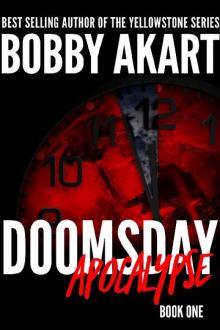 Doomsday Apocalypse
Doomsday Apocalypse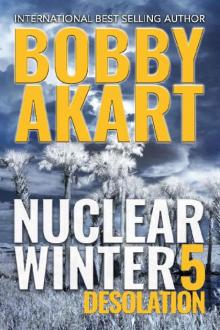 Nuclear Winter Desolation: Post Apocalyptic Survival Thriller (Nuclear Winter Series Book 5)
Nuclear Winter Desolation: Post Apocalyptic Survival Thriller (Nuclear Winter Series Book 5)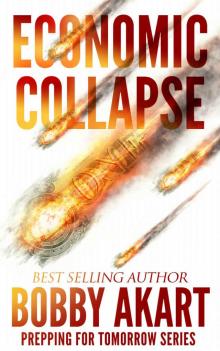 Economic Collapse (Prepping for Tomorrow Book 2)
Economic Collapse (Prepping for Tomorrow Book 2) Nuclear Winter Armageddon
Nuclear Winter Armageddon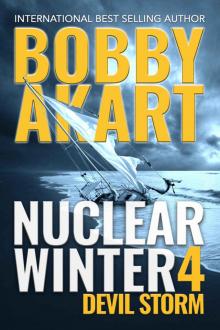 Nuclear Winter Devil Storm
Nuclear Winter Devil Storm Virus Hunters 3: A Medical Thriller
Virus Hunters 3: A Medical Thriller Doomsday Civil War: A Post-Apocalyptic Survival Thriller (The Doomsday Series Book 5)
Doomsday Civil War: A Post-Apocalyptic Survival Thriller (The Doomsday Series Book 5)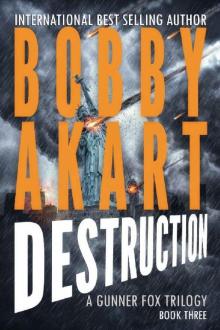 Asteroid Destruction
Asteroid Destruction Geostorm the Shift
Geostorm the Shift Asteroid Discovery
Asteroid Discovery Virus Hunters 2: A Medical Thriller
Virus Hunters 2: A Medical Thriller Geostorm The Shift: A Post-Apocalyptic EMP Survival Thriller (The Geostorm Series Book 1)
Geostorm The Shift: A Post-Apocalyptic EMP Survival Thriller (The Geostorm Series Book 1) Asteroid Diversion
Asteroid Diversion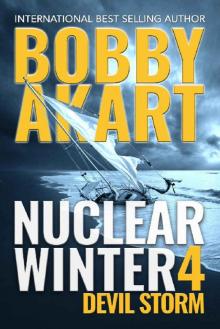 Nuclear Winter Devil Storm: Post Apocalyptic Survival Thriller (Nuclear Winter Series Book 4)
Nuclear Winter Devil Storm: Post Apocalyptic Survival Thriller (Nuclear Winter Series Book 4)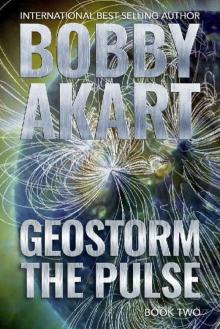 Geostorm The Pulse: A Post Apocalyptic EMP Survival Thriller (The Geostorm Series Book 2)
Geostorm The Pulse: A Post Apocalyptic EMP Survival Thriller (The Geostorm Series Book 2)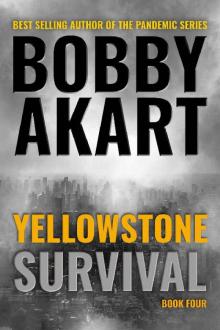 Yellowstone: Survival: A Post-Apocalyptic Survival Thriller (The Yellowstone Series Book 4)
Yellowstone: Survival: A Post-Apocalyptic Survival Thriller (The Yellowstone Series Book 4)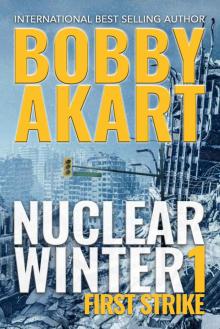 Nuclear Winter First Strike: Post-Apocalyptic Survival Thriller
Nuclear Winter First Strike: Post-Apocalyptic Survival Thriller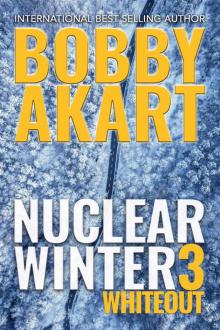 Nuclear Winter Whiteout
Nuclear Winter Whiteout Doomsday Anarchy
Doomsday Anarchy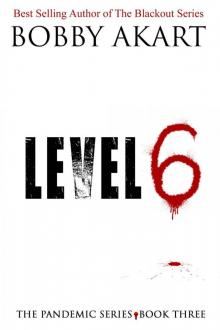 Pandemic: Level 6: A Post Apocalyptic Medical Thriller Fiction Series (The Pandemic Series Book 3)
Pandemic: Level 6: A Post Apocalyptic Medical Thriller Fiction Series (The Pandemic Series Book 3) Martial Law
Martial Law Odessa Reborn: A Terrorism Thriller (Gunner Fox Book 4)
Odessa Reborn: A Terrorism Thriller (Gunner Fox Book 4)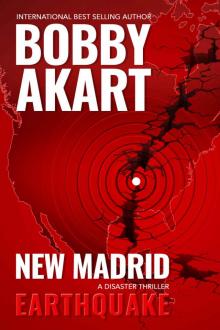 New Madrid Earthquake
New Madrid Earthquake Beyond Borders: Post Apocalyptic EMP Survival Fiction (The Lone Star Series Book 2)
Beyond Borders: Post Apocalyptic EMP Survival Fiction (The Lone Star Series Book 2) The Blackout Series (Book 3): Turning Point
The Blackout Series (Book 3): Turning Point Patriot's Farewell: A Political Thriller Fiction Series (Boston Brahmin Political Thrillers Book 7)
Patriot's Farewell: A Political Thriller Fiction Series (Boston Brahmin Political Thrillers Book 7) Lines in the Sand_Post Apocalyptic EMP Survival Fiction
Lines in the Sand_Post Apocalyptic EMP Survival Fiction The Mechanics: A Post-Apocalyptic Fiction Series
The Mechanics: A Post-Apocalyptic Fiction Series The Loyal Nine
The Loyal Nine Axis of Evil
Axis of Evil Axis of Evil: Post Apocalyptic EMP Survival Fiction (The Lone Star Series Book 1)
Axis of Evil: Post Apocalyptic EMP Survival Fiction (The Lone Star Series Book 1) Lines in the Sand: Post Apocalyptic EMP Survival Fiction (The Lone Star Series Book 3)
Lines in the Sand: Post Apocalyptic EMP Survival Fiction (The Lone Star Series Book 3) Odessa Strikes
Odessa Strikes The Blackout Series (Book 4): Shiloh Ranch
The Blackout Series (Book 4): Shiloh Ranch Hornet's Nest: A Post Apocalyptic EMP Survival Fiction Series (The Blackout Series Book 5)
Hornet's Nest: A Post Apocalyptic EMP Survival Fiction Series (The Blackout Series Book 5)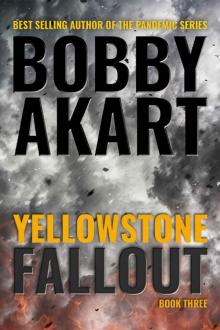 Yellowstone: Fallout: A Post-Apocalyptic Survival Thriller (The Yellowstone Series Book 3)
Yellowstone: Fallout: A Post-Apocalyptic Survival Thriller (The Yellowstone Series Book 3)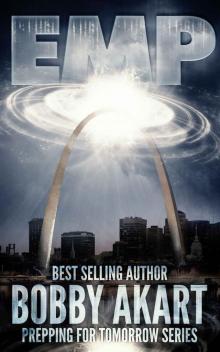 Electromagnetic Pulse
Electromagnetic Pulse Texas Strong: Post Apocalyptic EMP Survival Fiction (The Lone Star Series Book 4)
Texas Strong: Post Apocalyptic EMP Survival Fiction (The Lone Star Series Book 4) Fifth Column_Post Apocalyptic EMP Survival Fiction
Fifth Column_Post Apocalyptic EMP Survival Fiction Patriot's Farewell
Patriot's Farewell Texas Strong_Post Apocalyptic EMP Survival Fiction
Texas Strong_Post Apocalyptic EMP Survival Fiction Pandemic: The Innocents: A Post-Apocalyptic Medical Thriller Fiction Series (The Pandemic Series Book 2)
Pandemic: The Innocents: A Post-Apocalyptic Medical Thriller Fiction Series (The Pandemic Series Book 2) Shiloh Ranch: A Post Apocalyptic EMP Survival Fiction Series (The Blackout Series Book 4)
Shiloh Ranch: A Post Apocalyptic EMP Survival Fiction Series (The Blackout Series Book 4) Cyber Attack
Cyber Attack Beyond Borders
Beyond Borders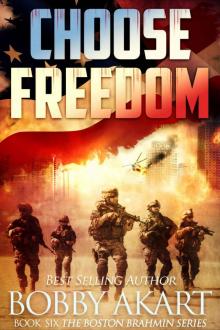 Choose Freedom: A Post-Apocalyptic Fiction Series (The Boston Brahmin Book 6)
Choose Freedom: A Post-Apocalyptic Fiction Series (The Boston Brahmin Book 6) False Flag
False Flag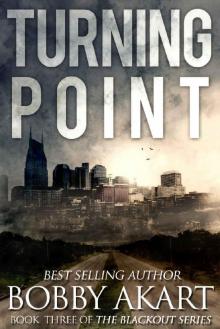 Turning Point: A Post Apocalyptic EMP Survival Fiction Series (The Blackout Series Book 3)
Turning Point: A Post Apocalyptic EMP Survival Fiction Series (The Blackout Series Book 3)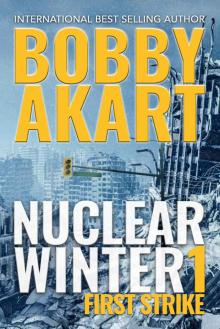 Nuclear Winter First Strike
Nuclear Winter First Strike Pandemic: Beginnings: A Post-Apocalyptic Medical Thriller Fiction Series (The Pandemic Series Book 1)
Pandemic: Beginnings: A Post-Apocalyptic Medical Thriller Fiction Series (The Pandemic Series Book 1) Devil's Homecoming: A Post Apocalyptic EMP Survival Fiction Series (The Blackout Series Book 6)
Devil's Homecoming: A Post Apocalyptic EMP Survival Fiction Series (The Blackout Series Book 6) The Blackout Series (Book 6): Devil's Homecoming
The Blackout Series (Book 6): Devil's Homecoming Yellowstone: Inferno: A Post-Apocalyptic Survival Thriller (The Yellowstone Series Book 2)
Yellowstone: Inferno: A Post-Apocalyptic Survival Thriller (The Yellowstone Series Book 2) Fifth Column: Post Apocalyptic EMP Survival Fiction (The Lone Star Series Book 5)
Fifth Column: Post Apocalyptic EMP Survival Fiction (The Lone Star Series Book 5)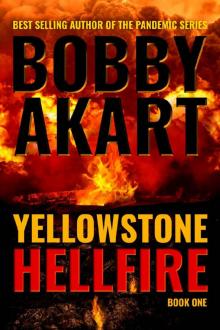 Yellowstone: Hellfire: A Post-Apocalyptic Survival Thriller (The Yellowstone Series Book 1)
Yellowstone: Hellfire: A Post-Apocalyptic Survival Thriller (The Yellowstone Series Book 1) The Blackout Series (Book 2): Zero Hour
The Blackout Series (Book 2): Zero Hour Suicide Six: Post Apocalyptic EMP Survival Fiction (The Lone Star Series Book 6)
Suicide Six: Post Apocalyptic EMP Survival Fiction (The Lone Star Series Book 6) Suicide Six_Post Apocalyptic EMP Survival Fiction
Suicide Six_Post Apocalyptic EMP Survival Fiction Zero Hour: A Post-Apocalyptic EMP Survival Fiction Series (The Blackout Series Book 2)
Zero Hour: A Post-Apocalyptic EMP Survival Fiction Series (The Blackout Series Book 2) Beyond Borders_Post Apocalyptic EMP Survival Fiction
Beyond Borders_Post Apocalyptic EMP Survival Fiction Pandemic: Quietus: A Post-Apocalyptic Dystopian Fiction Series (The Pandemic Series Book 4)
Pandemic: Quietus: A Post-Apocalyptic Dystopian Fiction Series (The Pandemic Series Book 4) 36 Hours: A Post-Apocalyptic EMP Survival Fiction Series
36 Hours: A Post-Apocalyptic EMP Survival Fiction Series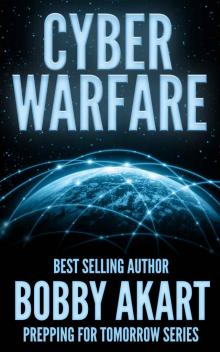 Cyber Warfare
Cyber Warfare